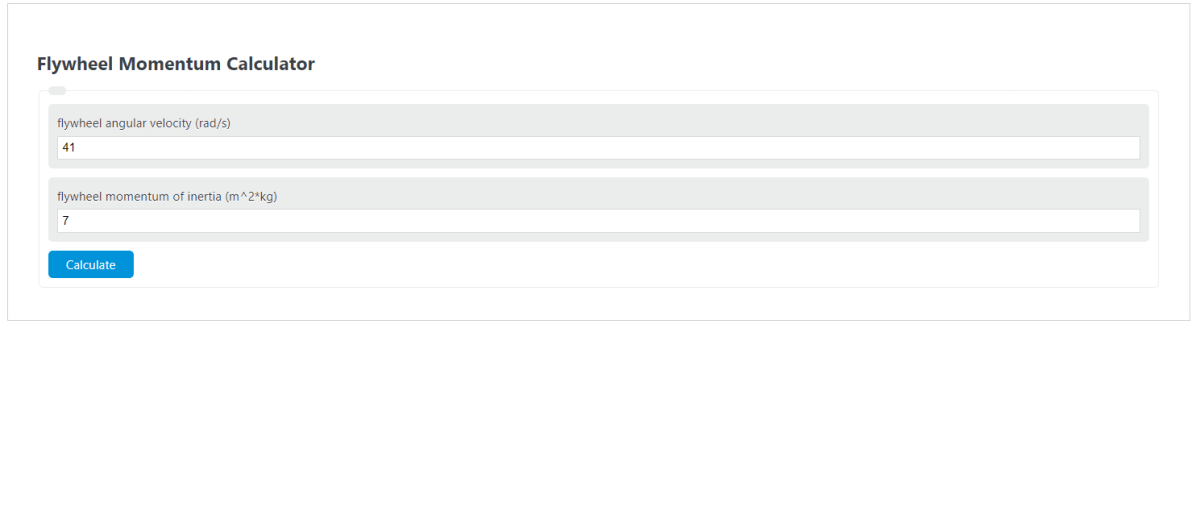Enter the flywheel angular velocity and the flywheel moment of inertia into the calculator to determine the Flywheel Momentum.
- All Momentum Calculators
- Rotational Momentum Calculator
- Angular Momentum Calculator
- Total Momentum Calculator
- System Momentum Calculator
- Flywheel Torque Calculator
Flywheel Momentum Formula
The following equation is used to calculate the Flywheel Momentum.
pFLY = w * I
- Where pFLY is the Flywheel Momentum (m/s*kg)
- w is the flywheel angular velocity (rad/s)
- I is the flywheel moment of inertia (m^2*kg)
To calculate the flywheel momentum, multiply the angular velocity by the flywheel’s moment of inertia.
What are the units for Flywheel Momentum?
The most common units for Flywheel Momentum are m/s*kg.
How to Calculate Flywheel Momentum?
Example Problem:
The following example problem outlines the steps and information needed to calculate the Flywheel Momentum.
First, determine the flywheel angular velocity. In this example, the flywheel angular velocity is determined to be 41 (rad/s).
Next, determine the flywheel momentum of inertia. For this problem, the flywheel moment of inertia is measured to be 7 (m^2*kg).
Finally, calculate the Flywheel Momentum using the formula above:
pFLY = w * I
Inserting the values from above and solving the equation with the imputed values gives:
pFLY = 41 * 7 = 287 (m/s*kg)
FAQ
What is the significance of flywheel momentum in mechanical systems?
Flywheel momentum is crucial in mechanical systems for energy storage and smooth operation. It allows the system to store kinetic energy when the energy supply exceeds demand and release it when the demand exceeds supply, thus stabilizing rotational speed and reducing fluctuations in energy output.
Can the flywheel momentum formula be applied to any rotating object?
Yes, the flywheel momentum formula (pFLY = w * I) can be applied to any rotating object to calculate its angular momentum. However, the specific moment of inertia (I) and angular velocity (w) values will vary depending on the object’s mass distribution and rotation speed.
How does changing the moment of inertia affect the flywheel’s momentum?
Changing the moment of inertia (I) of a flywheel directly affects its momentum. Increasing the moment of inertia, while keeping angular velocity (w) constant, will increase the flywheel’s momentum, allowing it to store more energy. Conversely, decreasing the moment of inertia will reduce the flywheel’s momentum and its energy storage capacity.
